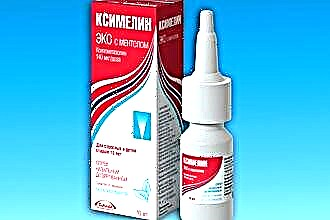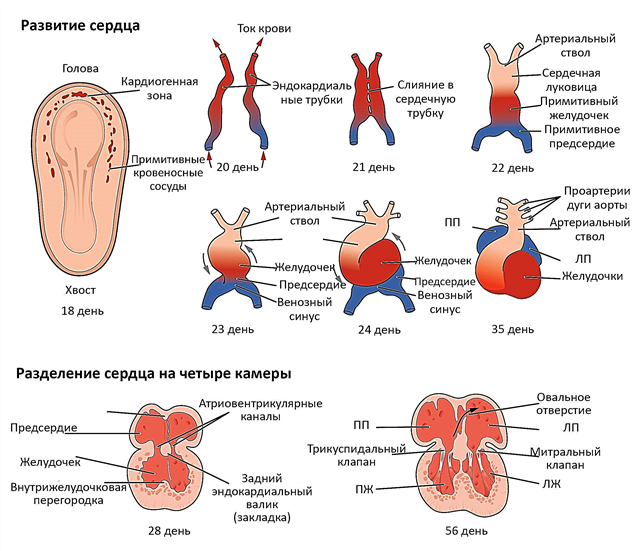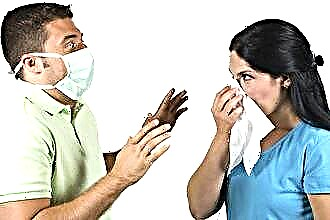Treatment of maxillary sinusitis in childhood generally differs little from the treatment of this disease in adults. The difference manifests itself only in the doses and strength of the selected drugs, but the principle of treatment remains unchanged. So, for example, in the case of bacterial sinusitis, children are prescribed antibiotic therapy in the same way as adults. Many parents are wary of treating sinusitis in children with antibiotics, and some even try to avoid it, but this is the only reliable and effective method in the fight against bacterial sinusitis. Compliance with the rules of use and doses will not harm the child's body.
However, parents should be aware that the independent use of antibiotics for sinusitis in children is unacceptable, since there is no single universal recipe for combating this pathology. The doctor selects therapy in accordance with the type of disease and its severity. Also, the characteristics of the patient's body are taken into account (allergic reactions, individual intolerance to certain drugs, etc.) and previous cases of antibiotic treatment (if the antibiotic has already been used, then the bacteria may be resistant to it).
Types of sinusitis
There are a large number of different classifications of sinusitis according to different parameters, but in the context of the peculiarities of the use of antibiotic therapy, we are only interested in a few of them. First, depending on the nature of the pathogen that provokes inflammation of the maxillary sinuses, there are viral and bacterial types of sinusitis. Secondly, in accordance with the characteristics and rate of the course of the disease, acute and chronic forms are distinguished.
It is important for parents to know that in case of viral sinus inflammation, antibiotics cannot be used. Antibacterial drugs are aimed solely at fighting bacteria and will be completely ineffective for viral infections. Viral sinusitis, as a rule, occurs in a child against the background of an acute respiratory viral infection. Due to various reasons (sensitivity to air quality, low strength of the respiratory muscles, etc.), children easily get infections, especially rhinoviruses that affect the nasal cavity.
Together with the streams of inhaled air, viruses often penetrate the paranasal cavities, causing inflammation there (intense mucus production begins, edema appears). During this period, it is important for children to receive effective treatment for ARVI. Having coped with the virus on time, the child's body will automatically get rid of the symptoms of sinusitis. With this type of disease, there is no need to resort to specific treatment. Moreover, the use of antibiotics is not justified, which, according to some parents, are designed to protect the child from serious complications.
It has been proven that antibacterial drugs do not have a prophylactic effect, but treat the cause of the disease, eliminating pathogens, which do not include viruses.
In the absence of bacteria in the body to which the action of antibiotics is directed, they only cause side effects. Likewise, the use of antibiotics is not recommended during the remission period of chronic sinusitis. At this stage, physiotherapy (UHF, microwave, ultrasound, electrophoresis, etc.) has an effective effect, and antibiotics are used during an exacerbation of the disease.
Symptoms of sinusitis
Antibiotics for sinusitis in children are used only in certain cases - if the pathology is provoked by bacteria. Therefore, parents need to know for what symptoms it is worth contacting a doctor to prescribe antibiotic therapy, and what signs indicate that sinusitis is caused by a virus and will pass with adequate and timely treatment of ARVI. Usually viral maxillary sinusitis does not have any special manifestations and is similar in symptomatology to ordinary rhinitis. Only if you take an X-ray to the child, then darkened areas will be visible on the picture, which indicate the presence of exudate in the sinuses.
If sinusitis initially has a bacterial nature or becomes such as a result of improper or untimely treatment of ARVI, then the child develops the following symptoms:
- yellowish or greenish nasal discharge with an unpleasant odor;
- pain, feeling of pressure and heaviness in the head;
- pain in the bridge of the nose and maxillary sinuses with pressure;
- swelling of the eyebrows or cheeks;
- subfebrile temperature (37.1-38 degrees).
Due to the fact that in children, especially at the age of 3 to 7 years, the sinuses are in the process of formation and have not yet turned into full-fledged cavities, the symptoms may not be fully expressed and not all.
In addition, at a young age, it can be difficult for children to explain what exactly worries them, so parents need to pay attention to the general condition of the child (lack of appetite, fatigue, etc.). Also, the development of inflammation of the maxillary sinuses is evidenced by pain when pressing on the inner corner of the eye.
Features of antibiotic therapy
There are two types of antibiotics: bactericidal and bacteriostatic. The function of the former is to destroy pathogenic microorganisms, while the latter are aimed at slowing down the growth and reproduction of bacteria. During the treatment of sinusitis, bactericidal antibiotics are usually used, which have an immediate effect. Usually, about 12 hours after starting the drug, the child feels a noticeable improvement in his condition. Nevertheless, the course must be completed in full, otherwise the risk of recurrence or chronicity of the disease increases.
If during the day no positive dynamics is observed in the patient's condition, then, most likely, the treatment will not give the desired result. The reasons for the ineffectiveness of the drug can be different, ranging from the resistance of bacteria to this drug and ending with the fact that a stronger drug is needed to combat the pathology. In this case, the doctor can make changes to the appointment. In addition, in especially severe cases, a puncture of the sinus wall is used for diagnostic purposes. The puncture is done in order to send a sample of the contents of the sinuses for culture. Seeding is all about growing bacteria and choosing the right treatment. However, the disadvantage of this method is the duration of the data acquisition process (about 7 days).
When treating maxillary sinusitis with antibiotics, it is imperative to adhere to the dosages recommended by the doctor. Some parents are afraid of harming their children and reduce the dose on their own, believing that this will be enough to fight the disease and at the same time, such a dose will save the child from dysbiosis. However, the ability of an antibiotic to destroy the intestinal flora is very exaggerated, and the main danger is just small doses. Firstly, the drug does not fully exert the desired effect. Secondly, some of the pathogens of the disease can survive and gain resistance to this antibiotic.
Usually in the treatment of sinusitis in children, low-toxic drugs are used. According to some experts, increasing the dose of such drugs is 2-3 times less risky than decreasing it by 10%. Therefore, you should be attentive to the doctor's prescriptions, clarifying with him the rules of admission (before or after meals, the number of meals per day, the duration of the entire course, etc.).It is also important to know that with an antibiotic that gave a result once, you cannot re-treat the child with the next inflammatory process in  sinuses:
sinuses:
- firstly, the risk of an allergic reaction of the body increases many times over,
- secondly, bacteria can be resistant to previously used drugs.
In this case, it is necessary to consult a doctor again, who will prescribe a drug of a different spectrum of action.
The only contraindication to taking antibiotics is individual intolerance to the individual components of the drug. In addition, one should be careful when choosing drugs for patients who suffer from chronic diseases of the liver, kidneys, and organs of the digestive system.
Groups and forms of antibiotics
Antibiotics are classified into groups depending on their chemical structure. When dealing with sinusitis, as a rule, they use:
- Penicillin. They are relatively easily tolerated by the child's body and practically do not cause side effects. However, their disadvantage is that a large number of bacteria are already resistant to them. This group includes Amoxiclav, Flemoxin solutab, etc.
- Macrolides. Usually used in case of intolerance to penicillin antibiotics. This group includes Macropen, Sumamed, Clarithromycin, etc.
- Cephalosporins. Stronger antibiotics that are prescribed for severe inflammation. This includes Cefuroxime, Cefotaxime, Ceftriaxone, etc.
Antibacterial drugs are available in different forms: tablets, suspensions, injections, drops, sprays, syrups, suppositories. If the severity of the disease allows, then children are usually prescribed topical antibiotics in the form of a spray or drops. These drugs are not very aggressive and cause few side effects. However, before the administration of drugs, it is necessary to use vasoconstrictor drops in order to clear the nasal passages of mucopurulent secretions and send the medicine to the site of infection. In such cases, Isofra or Bioparox sprays are most often prescribed. LoveHub.ch
If the treatment fails, then general antibiotics are prescribed, in most cases in tablets.
Sometimes, with complex forms of the disease, the complex use of tablets and sprays is possible. If the pathology does not respond to treatment for a long time, and the child's condition continues to deteriorate, then they switch to the injection form of drug administration. So it enters the bloodstream faster, bypassing the gastric tract. However, children can experience severe allergic reactions, so injections are given exclusively on an outpatient basis. Also, antibiotics (most often dioxidine) are often included in complex drops, which are prepared from 3-5 ingredients. However, such drops are usually contraindicated in young children.



